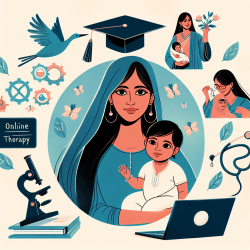Unlock the Secret to Managing Screen Time for Children with Autism!
In today's digital age, the use of screen-based technologies has become an integral part of daily life, especially for children and youth with autism. However, the unique needs of autistic children often require tailored guidelines to ensure healthy screen time use. A recent study titled "Digital citizenship of children and youth with autism: Developing guidelines and strategies for caregivers and clinicians to support healthy use of screens" has shed light on this critical issue.
The Need for Tailored Guidelines
The study highlights the significant increase in screen-based usage among children with autism, particularly in the wake of the COVID-19 pandemic. While screens can support cognitive, behavioral, and social competencies, they also pose risks of problematic screen time management. This is where the need for specific guidelines comes into play.
Research Methodology: The Delphi Method
Using the Delphi method, the study engaged 30 experts, including 20 clinicians and 10 caregivers, to develop consensus on guidelines for managing screen time. This structured, iterative process involved three rounds of surveys where experts rated their agreement on various statements. The final guidelines were those accepted by more than 75% of the panel.
Key Guidelines Developed
The study resulted in a comprehensive set of guidelines divided into six sections:
- General Principles: Emphasizing the need for digital citizenship as a modern-day skill.
- Timing and Content Considerations: Tailoring screen time according to individual needs and development.
- Monitoring and Regulation Strategies: Using tools like time monitoring apps and schedules.
- Behaviors to Monitor: Identifying red flags for screen time overuse.
- Additional Guidelines for Clinicians: Providing personalized information and resources.
- Resources: Offering a list of helpful resources for managing screen time.
Practical Application for Clinicians
For practitioners, these guidelines provide a robust framework to support families in managing screen time effectively. By implementing these strategies, clinicians can help caregivers set clear boundaries while promoting educational and therapeutic screen use.
Encouraging Further Research
While these guidelines are a significant step forward, they also highlight the need for ongoing research. Clinicians are encouraged to delve deeper into understanding the unique challenges faced by autistic children in the digital age and to contribute to the evolving body of knowledge in this field.
To read the original research paper, please follow this link: Digital citizenship of children and youth with autism: Developing guidelines and strategies for caregivers and clinicians to support healthy use of screens.










